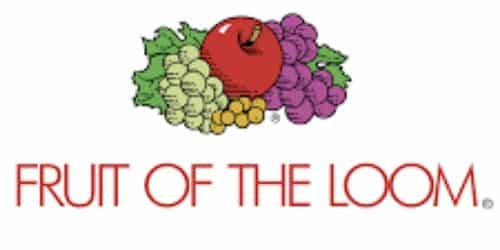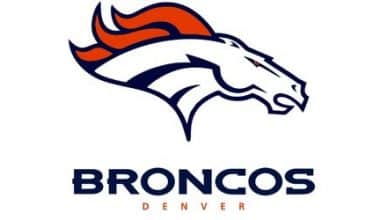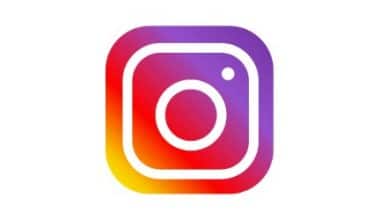The Fruit of the Loom logo features a red apple, leaves, green grapes, currants, and purple grapes. Fruit of the Loom produces underwear in the United States. The familiar cornucopia (horn of abundance) that was placed in front of the fruit is what most people recall about the logo, though. The Fruit of the Loom logo, which features a cornucopia, is one of the most potent Mandela Effects. It appears in many works, notably American flautist Frank Weshe’s “Flute of the Loom” album cover from 1973. To learn more about the history of the “Original Fruit of the Loom” logo, read down to get more information about it.
Fruit of the Loom
The largest private corporation in the United States is Fruit of the Loom. Its cornerstone was laid by the Knight brothers. The firm’s incorporation and initial registration date is 1871. The fruit of the loom also comes from the expression “fruit of the womb.” In the Bible, “fruit of the womb” means children, but in American English, “fruit of the loom” means fabrics. Clothing in nearly every imaginable style is readily accessible. The brand’s reputation also rests mostly on its casual and lingerie offerings.
In its early stages, cotton production is the company’s main focus. Fabrics are a key component in the products that this firm makes. There is also a huge range of products in a lot of different formats. Several pairs of jeans, a few jackets, and a few hoodies for guys are included. Customers can also choose from a selection of clothing for women and kids.
Moreover, everybody, from adults to kids, wears the clothing. The Fruit of the Loom firm is also responsible for making some high-quality sports gear. For example, softball and basketball are sports commodities that are made by this corporation. This organization is thus home to more than 32,400 people. The sheer volume of workers also attests to the company’s extensive reach.
Emblem’s Font and Color Scheme
Compared to real fruit, the logo’s picture of fruit is very stylized and abstract. Horital brush strokes bring out similarities to the textile industry. There are a few thin stripes on the grapes and the left side of the apple. They also look like a cloth with lots of tiny threads all tangled together.
All of the letters in the emblem used to be serifs, but after the most recent redesign, we decided to use a geometric chopped typeface instead. Paul Renner, a German designer, created the Futura Serie BQ-Book, which was thus based on the Bauhaus style of the 1920s and 1930s.
During the process of updating the logo, a wide spectrum of signature colors was used. There is a wide range of colors seen in nature, including red, pink, yellow, sand, purple, blue, green, white, and blue.
Why the Fruit of the Loom’s Logo Works?
Below is the reason why loom’s logo works for all:
#1. It Is A Tidy Logo
The person who made the Fruit of the Loom logo thought carefully about getting rid of any extra details. Only three design elements fruit, color, and typeface make up the Fruit of the Loom logo. The resulting logo design is cute and understated, but it packs quite a punch.
#2. The Logo Is Easy to Remember
The apple, the grape, and the berry are all common examples of fruits. It’s also likely that customers will remember a company whose logo shows them in a prominent way. Everyone who sees the Fruit of the Loom logo instantly recognizes it and associates it with the brand.
#3. Consistency of the Logo
Even though the brand has undergone six redesigns in its 128-year history, many of the same design components have been utilized in novel ways throughout. Due to its reliability, it has gained the patronage essential for success in the cutthroat corporate world. All iconic logos, also share certain commonalities that serve to cement customer recognition and trust.
#4. The Logo Can Grow With Its Business
There are also many ways to use the Fruit of the Loom logo for marketing. This is because its layout is simple and unpretentious, so it can be used on many different platforms without changing its quality or personality.
#5. The Logo Can Be Read
Even though it is an official symbol, the logo has kept its simple, straightforward style. This, however, indicates that the typeface is large and easy to read, no matter the medium. Wearables, websites, and business cards all have the same meaning in the eyes of the public.
Color Scheme Used in the Fruit of the Loom Logo
#1. The Color Black
Despite black’s mysterious reputation among designers, it’s a color linking with authority, sophistication, and strength. The Fruit of the Loom logo looks great in this color. It’s also in connection to things like terror, peril, and badness. However, the intention of the brand’s logo is to evoke feelings of optimism.
- Hex color: #201a1b
- RGB: 32 26 27
- CMYK: 0 19 16 87
- Pantone: PMS Neutral Black C
#2. Color Green
The green in the insignia is very prominent. This primary hue, used to color the leaves in the logo, is representative of renewal, health, and the outdoors. Not only does it make you feel happy, but it also makes you feel bored, envious, and inexperienced.
- Hex color: #00b144
- RGB: 0 177 68
- CMYK: 100 0 62 31
- Pantone: PMS 354 C
#3. Indicated by the Red Color
The apple is the logo’s most prominent fruit. The red color of the fruit is a symbol of romantic attraction and sexual appetite. Since red is the color of fire, it can also convey rage and hostility. The bold and striking red hue gives the logo an air of confidence and bravery.
- Hex color: #eb4292
- RGB: 235 66 146
- CMYK: 0 72 38 8
- Pantone: PMS 213 C
#4. The Color Purple
Would you like to be pampered like a prince or princess? The company’s logo is purple because it treats its clientele like nobility. Purple is the color of affluence and royalty. This shade of blue-red is a popular choice among young women.
- Hex color: #ff1732
- RGB: 255 23 50
- CMYK: 0 91 80 0
- Pantone: PMS Bright Red C
#5. The Color Yellow
The company’s logo features a subtle yellow hue. One of the grapes is in its care. The color yellow represents optimism, joy, and respect. However, negative emotions like envy, betrayal, and cowardice can also be conveyed by this dominant hue.
- Hex color: #ffcd00
- RGB: 255 205 0
- CMYK: 0 20 100 0
- Pantone: PMS 7548 C
Was There a Basket in the Fruit of the Loom Logo?
This story regarding a manufacturer of men’s undergarments, to put it mildly, Fruit of the Loom, is completely bonkers. User @NickHintonn, who may or may not be from another realm, tweeted that the Fruit of the Loom emblem has never featured a cornucopia. Those enormous baskets or horns from which the fruit was dripping never existed.
When Did Fruit of the Loom Change its Logo?
In 1927 one of the most noticeable changes was the introduction of an ellipse into the formerly rectangular emblem. All of the fruit was redrawn, but their placement and hues were kept very close to the original. As soon as the banner vanished, the wordmark appeared in white lettering against the blue background.
Fruit of the Loom Logo History
The Knight Brothers invested in the Pontiac Mills after years of trying their hands at many other ventures. They rebranded as B.B. and R. Knight Company in 1851. Warwick, Rhode Island is home to a thriving textile industry that has become the focus of the city’s efforts to channel its resources.
Cotton gowns of different sizes and styles were also produced by the company, including those for men and boys. The Knight Brothers rebranded their company as Fruit of the Loom in 1956. This name comes from something that happened at Rufus, Robert Knight’s friend, and customer,’s business.
A favorite activity of Rufus’s daughter was to paint apples on the bolt of fabric from Knight Brothers. Her fruit label designs were also a hit with customers, and Robert praised the young woman’s creativity. As a result, the name Fruit of the Loom was officially registered as a trademark in 1871.
In the 20th century, the firm was a subsidiary of Northwest Industries, Inc., and in 1985, William Farley purchased it and changed its name to Farley Industries, Inc. For 15 years, he controlled the company’s voting stock and served as president and CEO. The company’s revenue reached $2.5 billion while he was in charge. In later years, however, it had operational and financial difficulties and filed for chapter 11 bankruptcy protection in 1999. Warren Buffett paid around $835 million for the company because he saw it as a great investment opportunity.
The original meaning of the “Fruit of the loom logo” was the addition of fruit to Rober Knight’s product line was a stroke of genius. A play on the phrase “Fruit of the womb,” which implies “children,” “Fruit of the loom” refers to the products of one’s labor. This is an ancient verse from the book of Psalms.
What Happened to Fruit of the Loom?
More than 28,000 people are employed by Fruit of the Loom across the globe as of today, despite the fact that the company has been around for almost 160 years and specializes in underwear and casual wear.
Is Fruit of the Loom Fast Fashion?
The worldwide competition to the bottom includes fast fashion brands like Gildan. Many well-known companies, including Gildan, Hanes, Anvil, and Fruit of the Loom, have earned positive consumer sentiment. However, there is so much more going on behind the scenes… There is a global “race to the bottom” that includes fast fashion companies.
What is the Fruit of the Loom Slogan?
The slogan of Fruit of the Loom is, “They test their products so you know they work.”
Is Fruit of the Loom a Good Company?
The employees at Fruit of Loom are all physically suitable for the demanding work they do. Also, most importantly, it offers excellent perks to its staff.
Original Fruit of the Loom Logo History
The business was launched when the Knight brothers, Bob and Ray, purchased Pontiac Mill from the Warwick family and incorporated it as the B.B. and R. Knight Corporation. The company changed its name to Fruit of the Loom and began selling muslin in 1856.
Robert Knight’s friend Rufus Skeel’s shop in Providence was where the goods were sold. Skeel’s daughter was an artist, and she made labels for spools of fabric. She often drew depictions of fruits and berries because of her fondness for them. The upshot was a rise in interest in the goods. Apple-branded clothing was a hot item.
The Knight brothers thought these symbols were the pinnacle of branding. They also made a link between the name of their product and a Bible story about fruit. So, it became clear that this word could indicate both “product of the womb” (children) and “apparel”. Psalm 127: 3 in the Bible contains the exact words.
When the first trademark law was created in 1971, the company’s owner quickly patented the logo under the number 418. Using this emblem as its trademark, Fruit of the Loom manufactures and sells clothing. He used seven different symbols during his existence.
Original Fruit of the Loom Logo: 1893 – 1927 History
So, the original logo is a rectangle with lines around it that are different colors and sizes. The quality and style of the image indicate that it is a miniature painting. A broad, arc-shaped band sits beneath the skeleton. It bears the trademark’s designated moniker. All of the fruit and berries in the still life are painted to look as realistic as possible. There’s also a big red apple in the middle, highlighted somewhat on the side.
Many white grapes (often with a greenish hue) can be seen on the left, while a cluster of black grapes occupies the upper right (usually dark blue or dark purple). The white currant berries are in front of the apple. Leaves in the painting are also a tricolor representation of the fruit they accompany: grape green, apple yellow, and red (currant).
Original Fruit of the Loom Logo: 1927 – 1936 History
So, the designers changed the brand’s visual mark so that it looks more like an emblem. They did this by redrew it in a new, less realistic style, cutting off the tape, and thus putting the fruit in an oval frame. The currant berries were shifted to the left, and a few leaves were given a new hue. Simultaneously, the logo’s cloudy background faded away, leaving only a pale blue sky. The arch-like shape has been maintained above the top inscription, which has been preserved. The words “of the” are written smaller than the larger ones, and “Fruit” and “Loom” are both written in bold.
Original Fruit of the Loom Logo: 1936 – 1951 History
The lithographic print of the company’s mark, which is similar in appearance, texture, and shape to a wax seal, was approved during this time. Fruits and berries from the image are arranged in a triangular shape. A broad ribbon bearing the brand’s name is displayed at the top in a semicircle.
Original Fruit of the Loom Logo: 1951 – 1962 History
The designers brought color back to the logo in 1951 and even added a gradient to it. The grapes reverted to their original green and dark blue color, the currants became white, and the apple became red with a yellow accent. Additionally, the designers chose to make the letters of the name black so that it would stand out against the white background. They used a sandy beige color to paint the seal.
Original Fruit of the Loom Logo: 1962 – 1978 History
Since then, the insignia has undergone significant changes. The writers opted to utilize an oval, into which they inserted the firm’s name. In doing so, they brought the brand’s importance to the forefront. Plus, the designers shifted the image of the fruits and berries (the brand concept) to the top, right in the middle of the line that makes an oval. This action lowered the range of colors that could be displayed on the device and dimmed them. Both “fruit” and “loom” have been capitalized at the beginning, while the rest of the words are written in lowercase and underlined in black. The words “Unconditionally Guaranteed” are added to the inscription for good measure.
Original Fruit of the Loom Logo: 1978 – 2003 History
In 1978, there was a restoration of the normal coloration of fruits and leaves. They’ve recently become more memorable. The oval was shrunk in size, elongated, and also given a black border, and given depth by a shadow at its base, all thanks to the creators. The title’s underlining was removed, and the lowercase letters were replaced with capitals.
Original Fruit of the Loom Logo: 2003 – Present History
The current logo has two components: the text at the top, and an icon at the bottom. The designers did the elimination of the other components. There is a replacement of the fruit and berries from the old emblem with a more silent color scheme. The colors are the only distinguishing factor. The painters did their best to replicate their natural colors; thus, the bunches are white and purple, the currants are yellow, the apple is red with a yellow stalk, and the leaves are green (by the way, now they are all replaced by grapes).
The designers also tweaked the name’s font: in the present iteration, the name appears in grotesque, thin, elongated characters, with the exception of the center part. This is written in tiny print across only two lines.
Fruit of the Loom Logo Over the Years
Contrary to popular belief, Fruit of the Loom’s logo does not feature a cornucopia or a basket. To demonstrate there is no cornucopia foundation, we shall describe every logo used by this corporation from 1871 to the present day.
The first logo, which was painted on a dual-toned background, was used between the years 1893 and 1927. It’s a standard 4×3 format. It’s crisscrossed with lines, some horizontal and some vertical. Some of the lines are also 90-degree rectangles. The shapes and hues of these lines vary.
Company trademarks are spelled out in an arc or curve. Different colored fruit illustrations appear below the trademark. For instance, there can be an identification of different grape varieties by their coloration. There is a single bunch of black grapes. In contrast, the other grape has a distinctly green hue. Grapes surround the apple at the center. In addition, the logo features leaves in three distinct hues. This logo features leaves in yellow, green, and red.
The original logo had some revisions, and a new logo was in creation in 1927. The current logo has been in use for over ten years. You can use it between the years 1927 and 1936. As of recently, the logo is no longer square. It has an oval shape. The arcing form of the logo is a registered trademark. It is kept, however, there is an alternation of the wording. The trademark only uses capitalization for the words “Fruit” and “Loom,” with all other words appearing in small font. A red apple in the middle, with black and green berries and grapes on either side. You can see various hues in leaves.
From 1936 through 1951, the third logo was in use. Nearly 15 years are allotted for the length of validity. In comparison to other logos, this one stands out as particularly original. There is only one color in the entire logo, and it’s brown. The logo features a circular design. These circles come in a set of three. The logo for this company is an arch made of a ribbon at the top, surrounded by three circles that are all the same size. There’s a brownish hue to the apple and grapes, too.
The fourth logo was in use for over eleven years, beginning in 1951 and ending in 1962. The new logo seems related to the old one. It still looks the same. It features three concentric circles and is circular. However, it is not restricted to a single hue. There are many different colors to choose from. In this case, the backdrop color is yellow. The circle contains a red apple, and outside of it are black and green grapes. The trademark has a yellow backdrop in the shape of an arc.
For over fifteen years, from 1962 to 1978, the fifth logo was in use. These logos have nothing in common with this one. The distinctive oval form of this variety’s logo. There is capitalization and underlining of both “Fruit” and “Loom” to emphasize their importance. The remaining symbols are standard-sized and small. At the top of the trademark are pictures of different fruits and leaves, such as red apples, black grapes, and leaves that look like they might be green.
From 1978 until 2003, the sixth logo was in use. There is a display of the oval form of the trademark. However, the trademark consists of only capital letters. It stands out from the others and makes a clear impression. Fruits, in all their vivid hues, are prominent at the top.
The period of time covered by the seventh emblem begins in 2003 and continues into the present day. It lacks the complexity of earlier emblems. It’s divided into two sections. The first one is the written word, and the second is visuals. Only the initial and final letters are capitalized; the rest are written in lowercase. The grapes are purple, the leaves are green, and the apple has a scarlet and yellow stalk.
Did the Fruit of the Loom Logo Have a Cornucopia
This company has a really distinctive and original logo. It has many different things on it, such as red apples, green leaves, purple grapes, currants, and green grapes. Cornucopia and basket conjure up not only these fruits but also the false memory and mandala effect. The horn of plenty, indeed. Similarly to a goat’s horn, a cornucopia can provide an abundance of food. Rather like a basket, it encloses the Fruit within it.
The Fruit of the Loom symbol does not feature a cornucopia. Let’s pretend we’re interested in this corporation from 1871 and want to trace the evolution of its emblem. If that’s the case, you won’t find the image of a cornucopia in any logo. Like the Mandela effect or faulty memory.
A cornucopia was never a part of Fruit of the Loom’s emblem. However, those who wore this brand as children, people whose fathers or friends worked there, and people who have fond memories of that cornucopia never forget it.
What is the Real Fruit of the Loom Logo?
The Fruit of the Loom logo features four fruits on a square background: a red apple, purple grapes, light berries, and green grapes. The name of the company, in capital letters, Fruit of the Loom, was also contained inside a golden brown banner. There was an inclusion of the cloud and background of vegetation into the emblem.
What to Use a Cornucopia For?
The cornucopia is now only useful as a thanksgiving adornment. It still stands for plenty, a bumper crop, and thus, a respect for both of those things.
Summary
Fruit of the Loom is a renowned American textile company that specializes in underwear and other forms of casual clothing. Additionally, the Fruit of the Loom logo has served as a reliable representative of the company, representing it in happy and sad times alike without losing a single fruit. The emblem’s status as one of the most well-known and influential visual symbols worldwide is not accidental.
The logo and trademark have stood for quality, value, style, originality, and timelessness for more than a century. Let’s take lessons from its modesty, ascent, difficulties, and rebirth as entrepreneurs. The insignia has evolved and become unique throughout time. None of the Fruit of the Loom logos show a basket or cornucopia with fruit in it. It’s all just a mandala effect or false memories, with no substance or purpose.
Related Article
- HOW TO TRADEMARK A LOGO: Best US practices, Requirements & What you should know
- Small business ideas list: The top 10 (+ free tips)
- How To Trademark a Name: Importance, Tips & All You Need
- ALCOHOL BRANDS: Top 21 Brands in the World, Updated!






